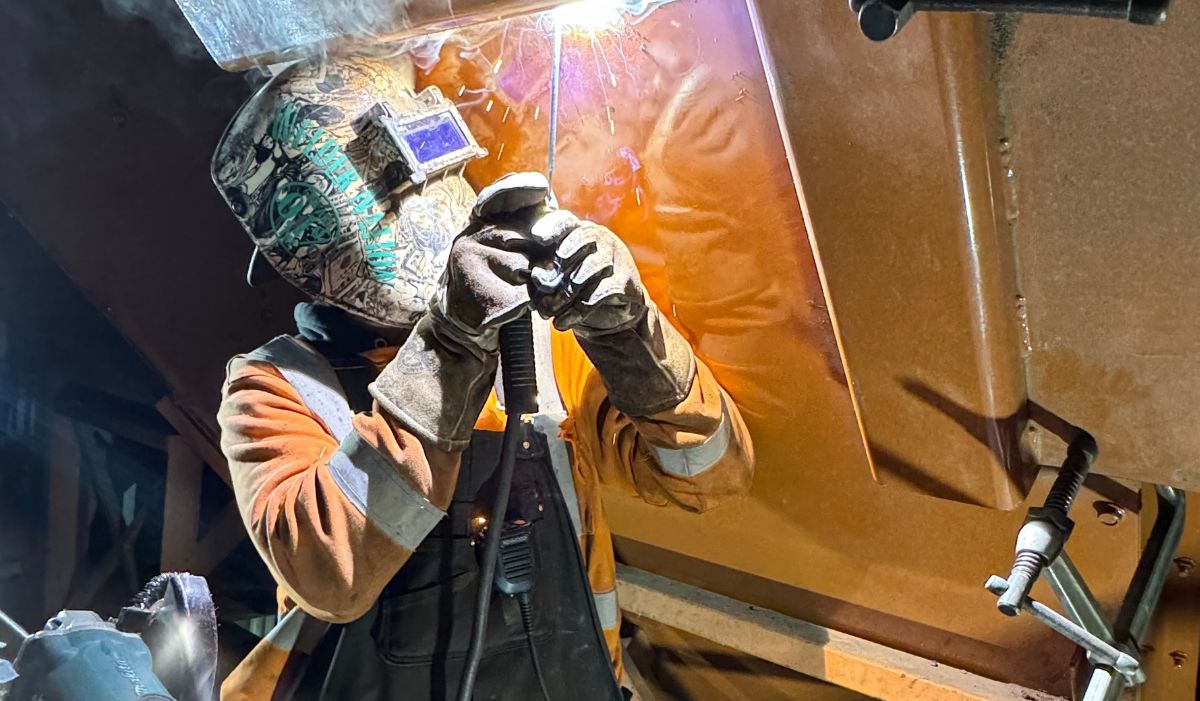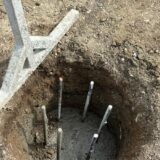The Role of Structural Steel Fabrication in Preventive Maintenance Inspections
Introduction to Structural Steel Fabrication
Structural steel fabrication is a powerhouse process in construction. It’s about cutting, bending, and assembling steel to make parts of buildings, bridges, and almost anything needing a strong skeleton. The skill lies in turning raw steel into shapes and pieces ready for construction, making sure they can hold up the structure they’re meant to support. This process isn’t just about putting pieces together; it’s the foundation of ensuring structures stand tall and withstand the tests of time and nature. Using high-grade steel is crucial because it brings the strength and durability needed for safety and longevity. The process involves several steps, usually starting with drafting and design, followed by cutting the steel, then shaping it, and finally, assembling. Each step requires precision and expertise to ensure the final product isn’t just strong but also accurate in its dimensions and design. This is why structural steel fabrication is not just a step in the construction process; it’s the backbone of building lasting structures.
Understanding Preventive Maintenance Inspections
Preventive maintenance inspections are like your regular health check-ups, but for buildings and structures. They are key to making sure everything stays in tip-top shape. When it comes to structural steel, these inspections help spot any problems such as corrosion, wear and tear, or damage from environmental factors early. By catching issues early, you can avoid big repair costs down the line. Think of them as a way to prevent small problems from turning into big headaches. These inspections should look at all parts of a structure to ensure everything is solid and secure. Regular checks mean you can fix things before they get worse, keeping buildings safe and extending their life. During these inspections, it’s also a good time to see if any parts need updating to meet current safety standards. This is especially true for structural steel components which are critical to a building’s strength and integrity.
The Vital Role of Structural Steel in Maintenance Plans
Structural steel plays a key part in keeping buildings and structures safe and standing. It’s strong, lasts long, and doesn’t ask for much to stay in good shape. But that doesn’t mean you can ignore it. Regular checks and upkeep are a must. Think about it like a car – if you want it to keep running smoothly, you need to check under the hood now and then.
In maintenance plans, inspecting structural steel is crucial. It helps catch issues like rust, cracks, or wear and tear before they turn into bigger problems. Early spotting means easier fixes. Plus, it can save a lot of money in the long run. A small fix now is better than a major repair or even a replacement later.
These inspections aren’t just about looking over the steel. They involve detailed checks to make sure everything is up to mark – that the steel’s integrity hasn’t been compromised. It’s about safety, too. Weak or damaged steel can risk the structure falling apart, and nobody wants that.
In short, structural steel might seem tough and low-maintenance, but regular inspections are key to making sure it stays part of a strong and reliable structure. It’s a small effort to keep everything standing tall and safe.
Key Inspection Points for Structural Steel Components
When looking at preventive maintenance inspections for structural steel components, there are several key points you need to focus on to ensure everything is in tip-top shape. Let’s dive into these crucial aspects one by one. First off, corrosion is your enemy. You want to spot any signs of rust or corrosion early on. This can save you from bigger, costlier problems in the future. Then, check the connections. Bolts, welds, and other connecting points need to be tight and intact. Any looseness or damage can compromise the structure’s integrity. Another thing to keep an eye on is the alignment. Misalignment can indicate issues with the foundation or potential for uneven stress distribution. This is something you can’t ignore. Also, be on the lookout for deformation. If any steel component looks bent, twisted, or out of its original shape, it’s a red flag. Such deformation can significantly weaken the structure. Lastly, don’t forget about wear and tear. Everyday use and environmental factors can gradually degrade the steel. Identifying areas that show signs of wear can guide you on where reinforcements might be needed. By keeping these inspection points in mind, you can effectively catch problems early and maintain the structural integrity of your steel components. It’s all about being proactive and diligent.
The Process of Inspecting Structural Steel Fabrications
In preventive maintenance inspections, checking structural steel fabrications is a must. This process helps ensure the integrity and safety of structures, like buildings and bridges. Inspectors start by looking for any signs of damage. This includes checking for rust, cracks, or any deformations. They use tools and techniques, like visual inspection, ultrasound, and magnetic particle inspection, to get a detailed view of the condition. Next, they examine the connections between different steel components, ensuring bolts, welds, and rivets are all secure and intact. Any loose or damaged connections can compromise the entire structure.
The condition of the protective coating, or paint, on steel is also checked. This layer protects the steel from the environment, preventing rust and corrosion. If it’s chipped or worn away, it needs fixing. Inspectors also review construction records and previous inspection reports. It helps them understand if there have been recurring issues or if certain areas need more attention. The goal is to catch and fix small problems before they turn into big ones. Regularly inspecting structural steel fabrications is key to maintaining the health and longevity of important structures.
Benefits of Regular Preventive Maintenance for Steel Structures
Regular preventive maintenance on steel structures is like getting a regular check-up for your health. It’s all about finding small problems before they turn into big ones. Here’s why it’s a smart move. First, it saves you money in the long run. Catching issues like rust or wear early means fixing them is cheaper and easier than waiting until they cause major damage. Second, it keeps things safe. Structures that are well-maintained are less likely to have dangerous failures. Third, it boosts the lifespan of your structure. Just like taking care of your car makes it last longer, regular maintenance keeps your steel structures strong and functional for years to come. Lastly, it ensures your structure always performs at its best. Nobody wants a bridge or building that’s not reliable. Regular checks mean everything works as it should, without any surprises. So, think of preventive maintenance as an investment, not a cost. It’s about paying a little now to save a lot later, keeping everyone safe, and making sure your structures stand the test of time.
Common Issues Detected in Structural Steel During Inspections
When we talk about inspections of structural steel, there are a few usual suspects that keep showing up as problems. First, there’s corrosion. It’s the enemy of metal, eating away at the steel’s strength over time. Then, you’ve got cracks and fissures. These tiny traitors can grow silently, compromising the integrity of the structure. Don’t forget about misalignment or distortion. This happens when parts of the steel structure aren’t in line or have warped. It throws everything off balance. Welding flaws, including incomplete welds or excessive weld spatter, are also common. They can weaken the connections between steel components. Lastly, fatigue damage shows up in areas under constant stress. It’s like bending a wire back and forth until it snaps—eventually, the steel gets tired too. Inspectors keep a sharp eye on these issues because catching them early can mean the difference between a simple fix and a costly, major repair down the line.
How Fabrication Techniques Influence Maintenance Needs
Fabrication techniques play a big role in how often and what kind of maintenance structural steel will need. Let’s get straight to the point: the better the fabrication, the less headache you’ll have later. High-quality welding and cutting make steel stronger and more resistant to issues like corrosion and wear. If your steel’s fabricated with top-notch methods, you’ll see fewer problems and lower maintenance costs over time.
For example, precision in the cutting process can ensure that pieces fit together perfectly, reducing stress on the structure. Similarly, effective welding techniques can prevent weak spots that might lead to cracks or breaks. Think of it this way: good fabrication is like a solid foundation for a house. Start strong, and you’ll deal with fewer problems down the road.
But here’s the kicker: when steel isn’t fabricated well, it’s like a ticking time bomb for maintenance teams. Poor cuts and shoddy welding can lead to misalignments or gaps. These flaws not only weaken the structure but also become cozy homes for moisture and dirt, which can speed up corrosion. Before you know it, you’re calling in for repairs much sooner than expected.
In short, the effort put into the fabrication process directly impacts the maintenance needs of structural steel. Better quality fabrication equals stronger steel, less frequent repairs, and more money saved. It’s a straightforward equation: invest in quality fabrication, and you’ll reap the benefits in the long run.
Implementing Findings from Inspections to Enhance Structural Integrity
After inspections reveal the health of your structure, you’ve got to act. It’s not just about finding problems; it’s about fixing them. Here’s the simple truth: using those inspection findings to strengthen your structure means getting ahead of potential disasters. We’re talking about reinforcing the building against wear, weather, and time. From minor tweaks to major repairs, these actions can drastically extend a structure’s lifespan. It involves welding in extra support, replacing corroded parts, or updating materials to more durable options. Every step taken not only addresses immediate concerns but also upgrades the overall integrity. It’s a direct roadmap—spot an issue through inspection and tackle it head-on. No beating around the bush; this approach keeps buildings standing strong and people safe.
Concluding Thoughts: Strengthening Infrastructure through Preventive Maintenance
Preventive maintenance is not just a to-do list item for the present; it’s an investment in the future longevity of our infrastructure. Structural steel fabrication plays a pivotal role in this, acting as both the backbone and the safety net of modern construction. By incorporating regular inspections and timely repairs, we mitigate risks and prevent potential disasters. This proactive approach not only ensures the structural integrity of buildings and bridges but also significantly extends their operational life. The crux of the matter is, with preventive maintenance, we’re not just fixing what’s broken; we’re fortifying our structures to withstand the tests of time and nature. It’s a testament to the saying, “An ounce of prevention is worth a pound of cure.” Let’s not view maintenance as a cost, but as a critical investment—because in the grand scheme of things, the cost of prevention will always be less than the cost of repair. Strengthening our infrastructure through preventive maintenance is not just smart; it’s imperative for a safer, more resilient future.



